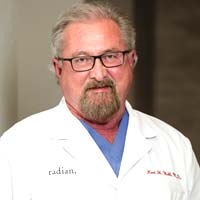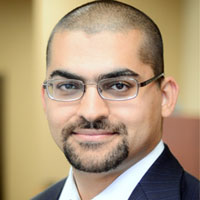A guide to Hair Transplants
Hair transplants are becoming a more popular procedure in cosmetic surgery, as medical science finds new and improved ways to carry it out successfully for a variety of patients and conditions. The procedure is a surgical technique that involves taking individual hair follicles from a donor site and transplanting them into the recipient site - usually the head, where there are bald or balding patches. However, the technique can also be used for restoring a range of types of hair on the body, including chest hair, eyelashes and eyebrows and beard hairs. It can also be used to fill in scars resulting from surgery or accidents. Most commonly, though, the procedure is used to alleviate male pattern baldness.
To harvest the donor hair, either strips of scalp are removed, with the wound then being sutured and the scalp tissue cut into tiny grafts, or individual hair follicles are taken out. Both processes are performed using local anaesthetic. Each follicle is inserted into the thinning area of the scalp or body using micro blades. This procedure leaves only very small puncture scars and there is less pain after surgery. Recovery usually takes seven days.
Modern procedures were first developed in Japan, in the 1930s, when surgeons began to use the follicular-unit-graft technique to replace damaged lashes or eyebrows. However, the modern science of hair transplants was really embraced in New York in the 1950s, when donor grafts were used successfully on patients with male pattern baldness and the theory of `donor dominance` developed. Today, the technique has been refined and become far less invasive, with graft incisions becoming ever smaller. Over fifty grafts can now be successfully placed in a single square centimetre. Developments have also occurred in the orientation and angle of grafts, producing more natural effects.
For patients considering a hair transplant, the process will begin with a consultation with a qualified surgeon, when the scalp is examined and expectations discussed. The surgeon will advise on what is possible and whether the procedure can be carried out in a single session or over several sessions. Results will also be discussed. Before surgery, the patient will be advised to refrain from using certain medicines, drinking alcohol or smoking in order to ensure the success of the graft. They will also be provided with post-operative antibiotics to prevent infection.
The surgery itself takes place on an outpatient basis, with mild anaesthesia and sedation if required. It lasts around six hours. Generally, the hair is washed and treated with antibacterial agents and then the surgeon harvests skin in an area of strong and healthy hair growth. The wound will be closed and then fine needles will be used to puncture the receiving site and place the follicles in a pre-determined pattern and density. Technicians will help to arrange the hair into a natural pattern. After this, dressings will need to be applied and changed regularly. The transplanted hair will fall out - known as shock loss - but new hair will begin to grow in two to three months, thickening through the next six months. Many providers offer the surgery, such as the
The Hospital Group and can advise on the most appropriate procedure and the patient`s suitability before the surgery is considered.
HairFear
Frequently asked questions about hair transplant procedures
How much does a hair transplant cost?
Hair transplants can vary in price based off of the area in the world that you are interested in getting a hair transplant as well as the size of the area where you may need a hair transplant. Experienced doctors in the United States will often charge some of the highest prices for a hair transplant worldwide and this is why so many travelers make the move to other parts the world like Turkey, India, Thailand, Mexico...etc for their hair transplants.
Will a hair transplant hurt?
Although hair transplants may look like a particularly
unpleasant or painful experience is actually very little discomfort involved
with the surgery itself. Hair transplants are always done under an anesthetic so there's absolutely zero pain during the treatment itself. Many people actually relate the process as being very similar to going to the dentist for filling or root canal. Mild pain can persist over the course of postop treatment but he generally just resumes for a few days.
Who can deliver the best surgery?
It's usually best to consider working with surgeons who have and IAHRS certification or international alliance of hair restoration surgeons recognition. IAHRS can often deliver recommendations for the best surgeons in each particular area.
Is this scarring noticeable?
Any type of hair transplant will require the use of incisions throughout the scalp. There can also sometimes be a small scar from the donor area towards the back of the scalp. Asking to look at photos of the surgeon's previous work will help you to see roughly how bad the scarring could be. In most cases an experienced professional can limit the look of scarring and noticeable marks from the surgery.
How long does it take for the hair to grow?
In most cases hair growth will start within eight months and you can start to see a full effect from the hair transplant after a full year. The initial signs of growth can usually start between 3 to 4 months after the surgery.
Are the results permanent?
The hair follicles that are transplanted are generally the ones which are genetically resistant against the symptoms of baldness. As long as you receive hair loss treatment later in your life after the symptoms of balding have started to subside, you can have a better chance at permanent results.
While everyone know you've had surgery?
If you want to limit the chance that people may find out about your surgery it's important to give at least three weeks of healing as the surgical area will be affected and red just after surgery. After around a month of healing it can look far less noticeable. You could consider wearing a hat while time passes or opting for some extra time off if possible.
How long should I rest after surgery?
It's recommended to rest for at least a few days after surgery so that your body can recover. Trenton to over exert yourself and limit sexual activity, running in the gym for around 10 days after surgery.
Is it possible to lose more hair as a result of surgery?
There is always a chance of shock loss which happens when the hair is weak and miniaturizing after the surgery. As long as the surgeon is choosing the correct hair follicles and performing the surgery well it's possible to minimize the chance of this happening however.
Will I need another hair transplant?
The need for another transplant really depends on the individual. With a solid foundation surgery and working to potentially bolster results with drug therapy, you can improve the stability of the hair that was transplanted as well as prevent further loss. Getting a hair transplant early
on in your 20s or early on in life could lead to needing long-term transplants as hair loss can be progressive.







